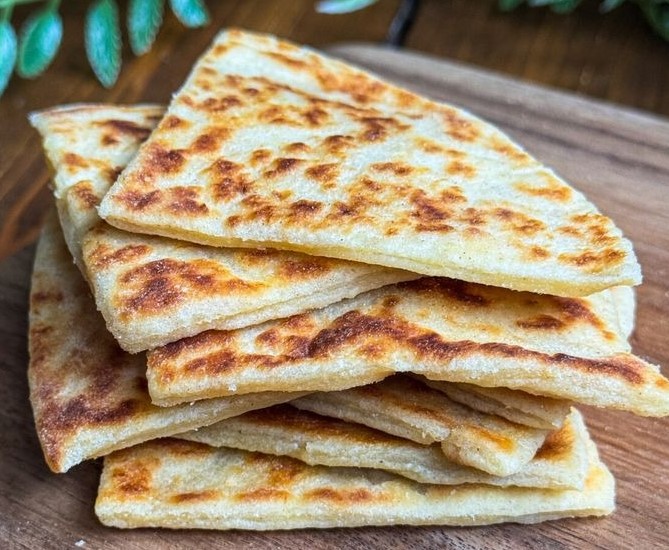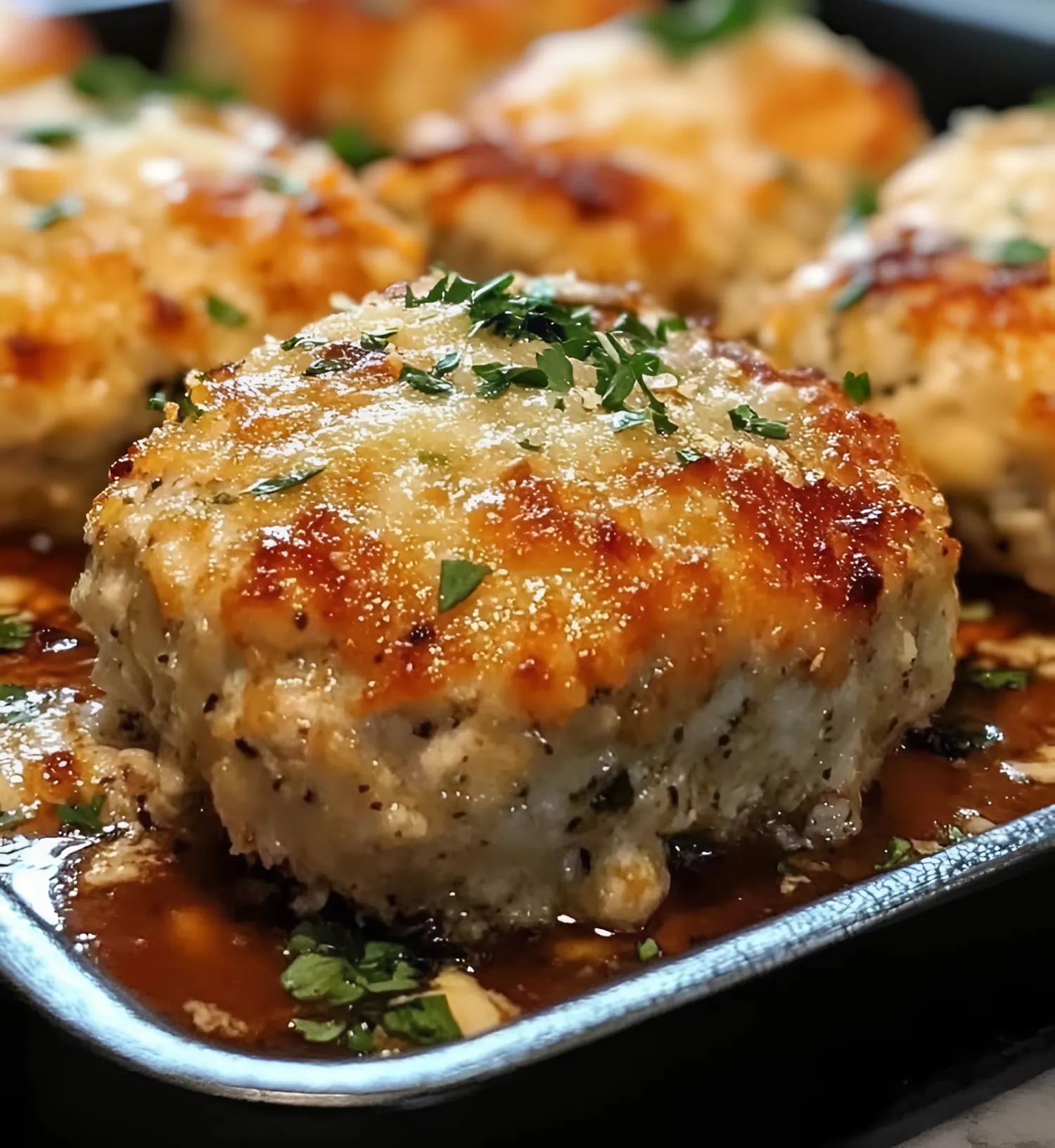My love for potato scones began on quiet Sunday mornings in the Highlands, where my mother always seemed to have a batch sizzling on her cast iron griddle before the church bells rang. I can still picture the soft light coming through her cottage window, the smell of browned butter and mashed potato drifting in the air, and her flour-dusted hands moving with practiced ease.
It wasn’t a fancy breakfast—just something she made from the leftover potatoes from the night before—but it tasted like comfort, like home.
I didn’t think much about those humble scones until after I retired from teaching. One day, rummaging through an old box of recipe cards, I found her handwritten instructions—smudged with flour, the ink slightly faded. I decided to make them again, partly out of curiosity, partly because I missed her. That batch wasn’t perfect, but it brought her voice back into my kitchen.
Since then, I’ve tweaked the recipe ever so slightly, making it easier for home cooks while still honoring the original. I’ve shared it with my grandchildren, neighbors, and now here with you. It’s more than a recipe—it’s a little piece of Scottish tradition, one that brings people together with simple, nourishing food.

Short Description
Scottish potato scones, or “tattie scones,” are soft, pan-fried flatbreads made from mashed potatoes, flour, butter, and a pinch of salt. They’re perfect with breakfast or as a savory snack.
Key Ingredients
For the Potato Scones:
- 450g potatoes (about 2 large), peeled and chopped
- 50g butter, softened
- 100g plain flour (plus extra for dusting)
- 1/2 tsp salt
- Pinch of black pepper (optional)
For Cooking:
-
Vegetable oil or butter (for frying)
Tools Needed
- Medium saucepan
- Potato masher
- Large mixing bowl
- Rolling pin
- Frying pan or flat griddle
- Knife or cutter
- Spatula
Cooking Instructions
Step 1: Cook the Potatoes
Place the peeled and chopped potatoes in a pot of cold salted water. Bring to a boil and let them simmer for 10–15 minutes until fork-tender. Drain well.
Step 2: Mash and Cool
Return the drained potatoes to the pan. Add the softened butter and mash until smooth and lump-free. Let the mash cool for about 10–15 minutes so it’s easier to handle.
Step 3: Make the Dough
In a mixing bowl, combine the mashed potatoes with the flour, salt, and black pepper (if using). Stir until it forms a soft, slightly tacky dough. If it feels too wet, sprinkle in a little more flour—just enough to bring it together.
Step 4: Roll and Shape
Dust your surface with flour. Turn out the dough and gently knead it for a few seconds—just until smooth. Roll it out to about ½ cm thick. Cut into circles using a cutter or slice into traditional triangles with a sharp knife.
Step 5: Cook the Scones
Heat a nonstick frying pan or griddle over medium heat. Lightly grease with butter or oil. Cook the scones in batches for 3–4 minutes on each side. They should be golden brown with light crisp edges but soft inside.
Step 6: Serve Warm
Serve straight from the pan, while still warm. They’re delicious with a pat of butter, a fried egg, or as part of a full Scottish breakfast.
Why You’ll Love This Recipe
– Simple ingredients, no fancy gadgets needed
– Naturally vegetarian
– Great use of leftover mashed potatoes
– Soft inside, crisp outside
– Ready in under 30 minutes
– Freezer-friendly
– A comforting, cultural classic
– Can be served sweet or savory
Mistakes to Avoid & Solutions
1. Dough too sticky?
Add flour, 1 tablespoon at a time, until it’s just manageable. Avoid overdoing it, or the scones will be dry.
2. Dough too dry or crumbly?
If it falls apart, mix in 1 tablespoon of milk or melted butter. Handle gently to avoid toughening the dough.
3. Overcooking the scones
They cook quickly—stay close. If the pan is too hot, the outside will burn before the inside sets. Medium heat works best.
4. Overworking the dough
Treat the dough like biscuit dough—mix just until combined. Overkneading makes it rubbery.
5. Cutting scones too thick
Keep them around ½ cm thick. Thicker scones won’t cook evenly on the stove.
Serving and Pairing Suggestions
Serve with salted butter or soft cream cheese
Add to a full Scottish breakfast with eggs, sausage, and beans
Pair with smoked salmon and dill for a brunch twist
Serve as a side with soups or stews
Drizzle with honey or jam for a sweet option
Ideal for a breakfast buffet or casual brunch table
Storage and Reheating Tips
Refrigerate: Store in an airtight container for up to 3 days
Freeze: Wrap each scone in parchment and freeze in a zip-top bag for up to 3 months
Reheat on stove: Warm in a skillet over medium-low heat until heated through
Reheat in toaster: Pop into a toaster for a quick crisp
Avoid microwave: Makes them soggy and chewy
FAQs
1. Can I use leftover mashed potatoes?
Yes, but make sure they’re not too creamy or runny. You may need to adjust the flour.
2. Do I need to peel the potatoes?
Yes, for a smooth texture. Potato skins will make the dough rough.
3. Can I make these gluten-free?
Absolutely. Use a gluten-free flour blend. Start with 90g and adjust as needed.
4. Can I freeze the uncooked dough?
Yes. Roll out and cut the shapes, then freeze between parchment sheets. Cook from frozen, adding an extra minute per side.
5. What kind of potatoes work best?
Starchy ones like Russets or Maris Piper work best. Avoid waxy types—they don’t mash as well.
Tips & Tricks
Use warm (not hot) mashed potatoes to help the dough come together
Don’t skip the salt—it enhances the potato flavor
A well-seasoned cast iron pan gives the best crust
Dust off extra flour before cooking to prevent burning
Let the dough rest 5 minutes before rolling for easier handling
Recipe Variations
1. Cheesy Herb Scones
Add 50g grated sharp cheddar and 1 tsp chopped chives to the dough
Follow same steps, but press cheese slightly into the surface before cooking
2. Sweet Potato Scones
Swap half the white potato for mashed sweet potato
Add ½ tsp cinnamon and a pinch of nutmeg to the flour
Serve with honey or maple butter
3. Vegan Version
Replace butter with vegan margarine
Use plant-based milk if extra moisture is needed
Cook with olive oil or vegan butter
4. Spiced Indian-Style Scones
Add ½ tsp ground cumin and ¼ tsp turmeric to the flour
Mix in 1 tbsp chopped cilantro
Serve with mango chutney or yogurt
Final Thoughts
Scottish potato scones are a quiet kind of magic—the kind that doesn’t shout but lingers long after breakfast is done. Each bite carries a whisper of old kitchens, simple traditions, and the unspoken comfort of knowing you’re fed and loved. As someone who’s spent decades standing in front of chalkboards and now finds peace by the stovetop, I can say that these little scones have become a gentle ritual in my week. Not just for the taste, but for the way they connect me to my past and to everyone I share them with.
They may not be fancy or photogenic like some trendy dishes, but that’s part of the charm. They’re honest. Unfussy. Dependable. And that, I think, is what we all need a little more of these days. If you find joy in making them, pass them on. Recipes like this aren’t just meant to be cooked—they’re meant to be shared.

Ingredients
- For the Potato Scones:
- 450g potatoes (about 2 large), peeled and chopped
- 50g butter, softened
- 100g plain flour (plus extra for dusting)
- 1/2 tsp salt
- Pinch of black pepper (optional)
- For Cooking:
- Vegetable oil or butter (for frying)


